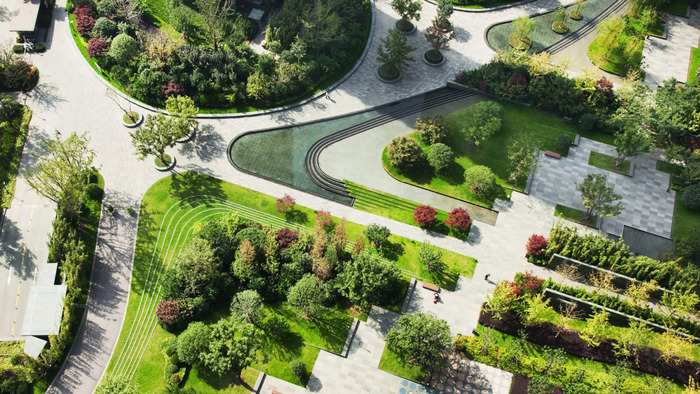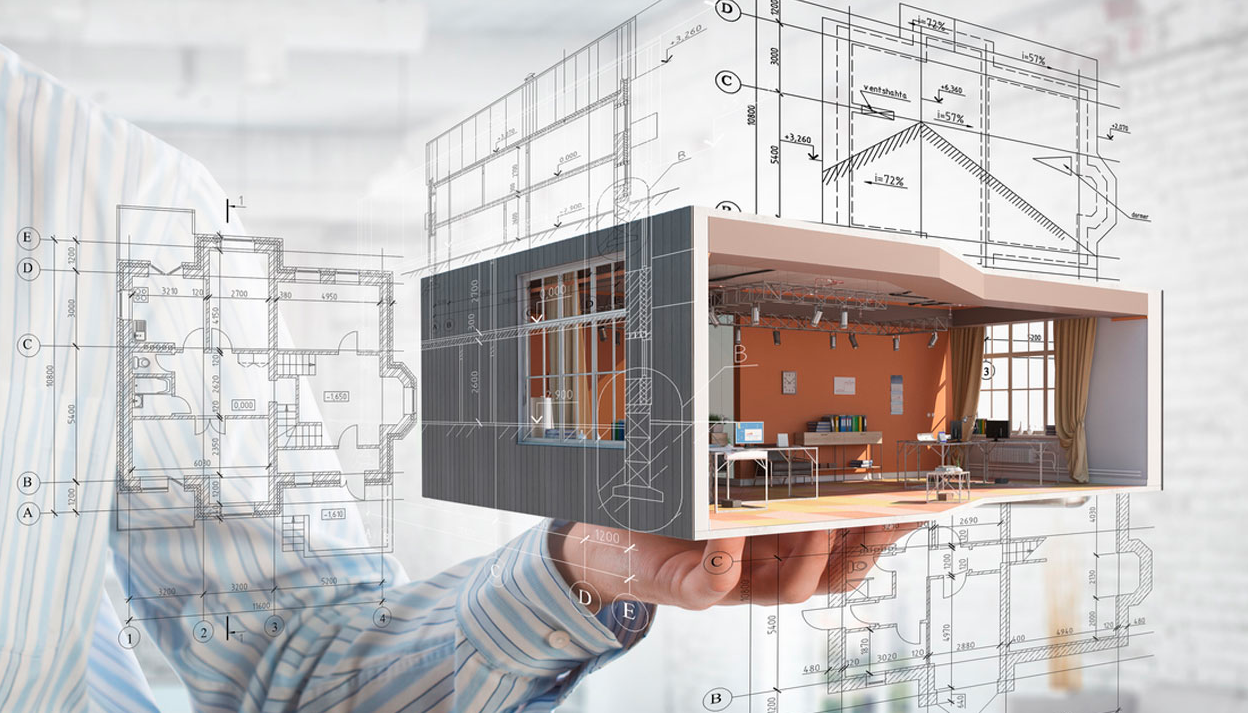How BIM is Transforming Landscape Design: Key Applications & Benefits

Table of Contents
BIM in landscape design is reshaping how professionals plan, visualise, and execute outdoor spaces. In modern landscape architecture, BIM enables better coordination between terrain, planting, drainage, and site features, bridging the gap between design intent and construction reality.
Landscape design is a bridge between the built and unbuilt spaces. It deals with the design of semi-open areas within a building such as courtyards, terraces, and atriums along with outdoor areas such as parks, gardens, promenades, squares, arenas, and waterfront developments. Landscaping helps create greener environments, re-establishing the bond between people and places. This job is done by a landscape designer, a professional who has expertise in spatial design and horticulture.
Below are the software that work with BIM, the key benefits, and practical uses for landscape projects.
What Does a Landscape Designer Do?

Landscape design is a niche field within the wider architecture field. It involves creating outdoor environments that blend with the natural surroundings. A landscape designer knows the topography, climate, soil conditions, existing vegetation, and socio-cultural context of the place to create relevant landscaping solutions.
Highlights:
- Designs outdoor areas blending aesthetics and ecology.
- Understands topography, soil, and climate for relevant solutions.
- Coordinates with architects, planners, and engineers.
- Balances horticulture, architecture, and sustainability principles.
The job also involves plant selection and planning and designing hardscape features, water features, and lighting. The landscape designer works in close association with city governing authorities, architects, urban designers, and urban planners to curate unique micro-environments.
Why are Landscape Designers Shifting to BIM?

Traditionally, landscape designers worked with hand-drafted drawings to realise their vision on-site. The introduction of AutoCAD in the late 90s helped them design efficiently by leveraging digitalisation. However, the true game changer was cutting-edge tools, software, and processes like Building Information Modelling (BIM).
BIM is a process that involves creating a data-rich multi-dimensional model on a shared platform between all project stakeholders. This model possesses complete information about the physical, material, and structural attributes of a built space, making it a comprehensive collaboration tool. Given such a seamless approach to work, modern landscape designers are rapidly embracing BIM in their professional league.
Which Landscape Design Software is Compatible With BIM?

Landscape designers can use numerous BIM software. Take a look at some of the most promising BIM-compatible landscape design software for Architecture, Engineering, and Construction (AEC) professionals.
1. Vectorworks Landmark
Known for its robust tools tailored for landscape design, Vectorworks Landmark offers unique BIM capabilities. Designers can software to create detailed 3D models, incorporating vegetation, terrain, and hardscape elements. It aids an easy information flow and accurate data exchange within the BIM ecosystem.
Also Check out: What are ‘Groundscrapers’
2. VizTerra
VizTerra is a landscape design software that effortlessly integrates with BIM workflows. With a focus on visualisation and presentation, it empowers landscape designers to create immersive, realistic renderings of outdoor spaces.
3. Realtime Landscaping
Realtime Landscaping is another notable software, offering BIM compatibility for landscape design projects. With an emphasis on real-time visualisation, it enables designers to instantly see the impact of their decisions on the design, fostering efficient decision-making within the BIM framework.
.png?width=775&height=404&name=Application%20of%20landscape%20design%20software%20(2).png)
4. ArchiCAD
ArchiCAD is a widely used BIM software that can be extended for landscape design with specific add-ons. These extensions offer specialised tools for terrain modelling, plant selection, and irrigation planning, allowing landscape designers to collaborate with architects using the same BIM platform.
5. Revit with Dynamo
Autodesk Revit is a powerful BIM tool used by architects worldwide. Dynamo for Revit a visual programming extension, becomes a versatile platform for landscape designers. Dynamo enables the creation of custom scripts, enhancing the flexibility and adaptability of the software for landscape-specific requirements.
6. PlantFactory
PlantFactory seamlessly integrates with BIM processes and helps create highly realistic 3D plants. Landscape designers can use this software to generate lifelike representations of plants, ensuring accurate visualisation and their placement within broader BIM models.
What are the Benefits of BIM in Landscape Design?

BIM is not just a passing-by trend but a technology that defines the AEC industry’s future. Take a deeper dive into the reasons why BIM in landscape architecture is proving beneficial.
Highlights:
- Encourages real-time collaboration between disciplines.
- Offers advanced 3D visualisation and presentation tools.
- Promotes sustainable design through data analysis.
- Improves project cost estimation and efficiency.
- Ensures accuracy in design and documentation.
- Supports maintenance and lifecycle management.
1. Team Collaboration
BIM enables effective communication among multidisciplinary teams. Landscape designers can work collaboratively with architects, engineers, and other project stakeholders within a shared BIM environment. This promotes real-time information exchange and reduces the risk of errors.
2. Effective 3D Visualisation
BIM empowers landscape designers with advanced 3D visualisation tools to create realistic representations of outdoor areas. This immersive experience aids in better decision-making by providing stakeholders with a clear understanding of the proposed design.
3. Sustainable Design Practices
With an increased focus on sustainability, BIM allows landscape designers to incorporate environmentally friendly elements into their projects. The software enables the analysis of environmental impacts, water usage, and other critical factors, promoting the integration of sustainable practices in landscape design.

4. Improved Cost Estimation and Planning
BIM provides robust tools for cost estimation and project planning. Landscape designers can create detailed models that help in accurately estimating material quantities, labour costs, and project timelines. This enhances project feasibility assessments and allows for better budget management throughout the design and construction phases.
5. Enhanced Accuracy and Precision
BIM in landscape architecture facilitates precise documentation and data management. Designers can create accurate models that include detailed information about plant species, terrain features, and hardscape elements, leading to more efficient project execution and streamlined construction processes.
Also Check out: Masters Vs Certificate Courses: Which is Better for Architects and Engineers
6. Lifecycle Management
Utilising BIM in landscape architecture offers benefits throughout the entire project’s lifecycle. Landscape designers can contribute to the maintenance and management of the outdoors. It provides stakeholders with access to comprehensive information about plant species, maintenance schedules, and other essential data.
What are the Uses of BIM in Landscape Architecture?

The BIM applications in landscape architecture range from conceptualisation to designing and execution. Let’s have a look at the various uses of BIM in landscaping.
Highlights:
- Supports detailed 3D modelling and immersive presentations.
- Integrates GIS for complete site analysis.
- Streamlines planting and material selection.
- Enhances cross-disciplinary coordination.
- Generates accurate cost data and reports.
- Simplifies documentation and project tracking.
1. 3D Modelling and Visualisation
The BIM adoption in landscape architecture empowers designers to create intricate 3D models that bring outdoor spaces to life. Such immersive experience provides the scope of enhanced design communication to clients and stakeholders.
2. Holistic Site Analysis
BIM seamlessly integrates with Geographic Information System (GIS) data to enhance site analysis. Landscape architects can overlay topographical information, assess sun exposure, and analyse soil conditions.
3. Planting Design
The availability of detailed databases within BIM software enables designers to select and place plant species based on factors such as climate, soil type, and maintenance needs. This streamlines the planting process leading to the creation of sustainable landscapes.
4. Collaboration and Coordination
BIM acts as a collaborative hub, bringing together architects, engineers, and landscape designers within a shared digital environment. It ensures that changes in one aspect of the project are instantly reflected in the entire model. This fosters coordination and cohesion among different disciplines throughout the project lifecycle.
5. Generating Bill of Quantities
Embracing BIM in landscape architecture provides accurate data for project budgeting. It enables the extraction of quantities and cost-related information directly from the model, streamlining the estimation process and enhancing financial planning.
6. Project Documentation and Reporting
BIM offers a centralised platform for storing and managing project-related information. Landscape architects can generate detailed reports, including material specifications, construction details, and maintenance schedules.
How to Learn BIM for Landscape Designers?
Highlights:
- Research course options thoroughly before enrolling.
- Choose between classroom and online formats.
- Evaluate cost, flexibility, and curriculum depth.
- Ensure the course covers practical applications and workflows.
Before committing to a learning path, learners must thoroughly research all available online BIM programs. They must consider factors such as course content, instructor expertise, and reviews from previous learners. Based on their alignment with learning styles, students can explore either of the two types of BIM training courses mentioned below.
Classroom Programs
Physical attendance programs offer a structured and interactive learning environment. Students benefit from face-to-face interactions with instructors and peers. These programs often provide hands-on experiences and access to physical resources for holistic topical understanding. The cost of traditional classroom programs for learning BIM varies based on factors such as the institution, program duration, and location. On average, landscape designers can expect to invest anywhere from INR 10,00,000 to 20,00,000 for a comprehensive BIM course.
However, it's essential to consider additional expenses like travel, accommodation, and materials. Also, classroom programs or offline courses lack flexibility and accessibility, and students can't learn at their own pace. Besides, offline courses generally don't have an updated curriculum.
Online BIM Courses
Digital courses offer flexibility and accessibility. Landscape designers can learn at their own pace, fitting coursework into their busy schedules. Such courses often provide a diverse range of resources, including video lectures, interactive simulations, and downloadable materials. The cost of online BIM courses is typically more budget-friendly compared to traditional classroom programs. The course prices can range from INR 1,000 to 5,00,000 depending upon the depth of the curriculum, course length, and other offerings. Some leading platforms offering BIM courses include Novatr, Coursera, Udemy, and LinkedIn.
These days, live online classes also offer face-to-face interactions with instructors and peers. They essentially have an updated curriculum and they offer flexibility. Students can learn at their own learning pace and their convenience.
Career Opportunities with BIM for Landscape Designers
The growing adoption of BIM in landscape architecture has opened diverse and rewarding career paths worldwide. Professionals with both design and digital skills can work across architecture, infrastructure, and environmental planning sectors.
1. BIM Coordinator (Landscape Focus)
Oversees the integration of landscape data within BIM workflows, ensuring consistency and accuracy across multidisciplinary models.
2. Landscape BIM Modeller or Technician
Creates and manages detailed 3D landscape models, linking topography, planting data, and hardscape information for project use.
3. Sustainability Consultant (Site-Focused)
Uses BIM analytics to evaluate water management, biodiversity impact, and energy efficiency, guiding projects toward sustainable outcomes.
4. Digital Design Specialist in AEC Firms
Combines visualisation and technical modelling skills to develop cutting-edge digital environments for architectural and urban projects.
5. Landscape Project Manager (BIM-Enabled)
Coordinates teams and timelines using BIM data to ensure project milestones are met efficiently and with full transparency.
As more AEC firms prioritise digital delivery, BIM-trained landscape professionals can expect stronger career growth and international opportunities.
In Conclusion
BIM gives landscape teams a shared, data-rich model that enhances decision-making from concept to maintenance. With compatible software and efficient workflows, firms can deliver greener, faster, and more predictable landscape projects.
Top global firms like AECOM, Gensler, and Arup are increasingly hiring BIM-trained landscape designers. If you’re ready to advance in this evolving field, explore the BIM Professional Course for Architects by Novatr, a program designed to help professionals master BIM workflows, collaborate effectively, and secure placement in leading AEC companies.
FAQs
1. What is BIM in landscape architecture?
Ans: BIM in landscape architecture refers to the use of digital, data-driven models to design and manage outdoor environments such as parks, gardens, and urban spaces.
2. Which software supports BIM for landscape design?
Ans: Software like Vectorworks Landmark, Revit with Dynamo, ArchiCAD, and PlantFactory are widely used for BIM-enabled landscape design.
3. What are the key benefits of BIM for landscape projects?
Ans: The main benefits include improved collaboration, sustainable design integration, accurate cost estimation, and efficient project management.
4. How is BIM used for planting design and site analysis?
Ans: BIM allows designers to map soil types, sun exposure, and water use, helping select and position plants accurately within 3D models.
5. What careers can landscape designers pursue with BIM skills?
Ans: Landscape designers can become BIM Coordinators, Modellers, Sustainability Specialists, or Project Managers within global AEC firms.

 Thanks for connecting!
Thanks for connecting!


.png)
.jpg)




-1.png)

